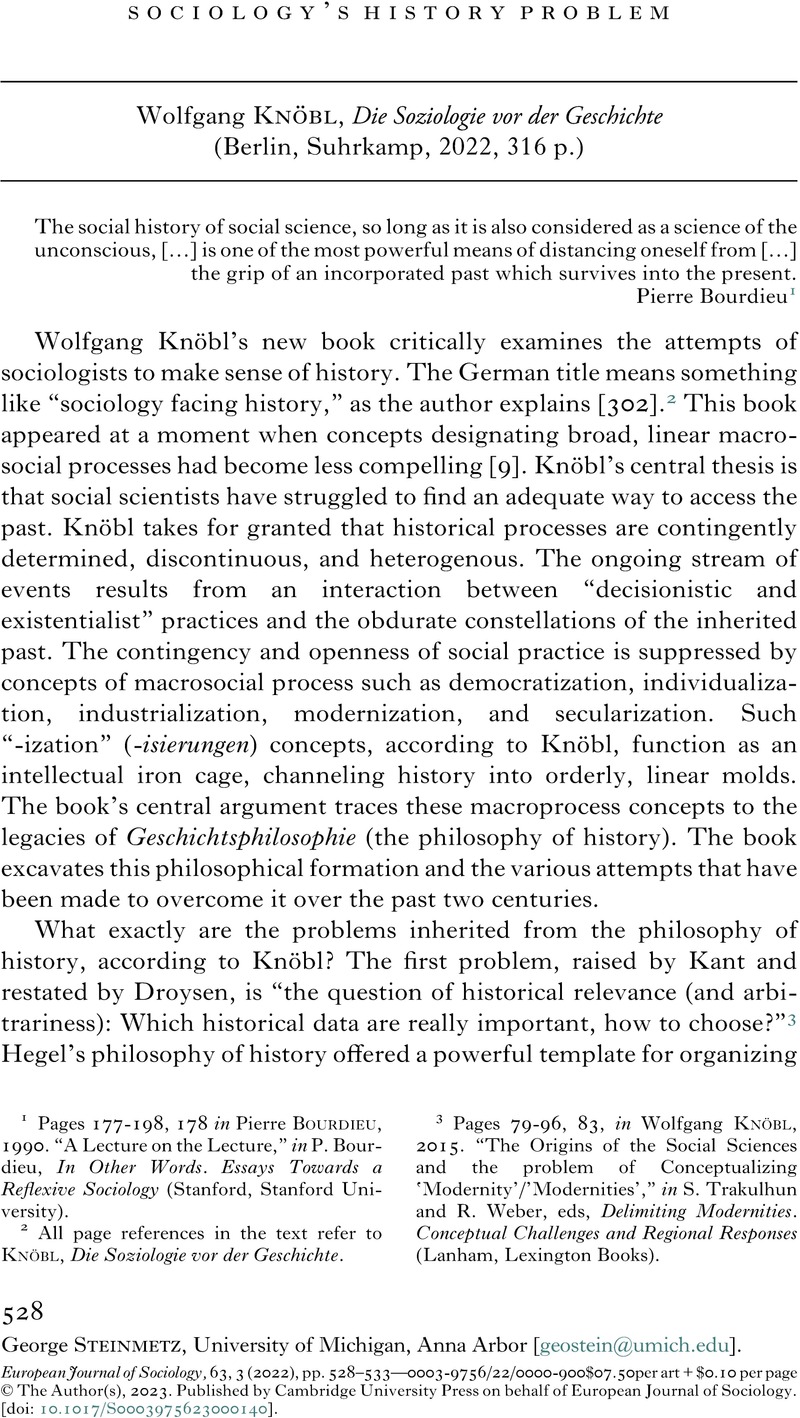No CrossRef data available.
Published online by Cambridge University Press: 23 February 2023

1 Pages 177-198, 178 in Pierre Bourdieu, 1990. “A Lecture on the Lecture,” in P. Bourdieu, In Other Words. Essays Towards a Reflexive Sociology (Stanford, Stanford University).
2 All page references in the text refer to Knöbl, Die Soziologie vor der Geschichte.
3 Pages 79-96, 83, in Wolfgang Knöbl, 2015. “The Origins of the Social Sciences and the problem of Conceptualizing ʽModernityʼ/ʼModernitiesʼ,” in S. Trakulhun and R. Weber, eds, Delimiting Modernities. Conceptual Challenges and Regional Responses (Lanham, Lexington Books).
4 Pages: 137-139, in Giovanni Busino, 1985. “Souvenirs suisses,” Commentaire, 28-29.
5 Raymond Aron, [1938] 1961. Introduction to the Philosophy of History: An Essay on the Limits of Historical Objectivity (Boston, Beacon Press).
6 Raymond Aron, 1935. La Sociologie allemande contemporaine (Paris, Alcan).
7 Rainer Nicolaysen, 1997. Siegfried Landshut die Wiederentdeckung der Politik; eine Biographie (Frankfurt am Main, Jüdischer Verlag).
8 Wolfgang Knöbl, 2007. Die Kontingenz der Moderne. Wege in Europa, Asien und Amerika (Frankfurt a.M., Campus).
9 Hayden White, 1987. “The Value of Narrativity in the Representation of Reality,” in H. White, The Content of the Form (Baltimore, MD, Johns Hopkins University Press) : 1-25.
10 Ernst Troeltsch, 1922. Der Historismus und seine Probleme, 1, Das logische Problem der Geschichtsphilosophie (Tübingen, J. C. B. Mohr).